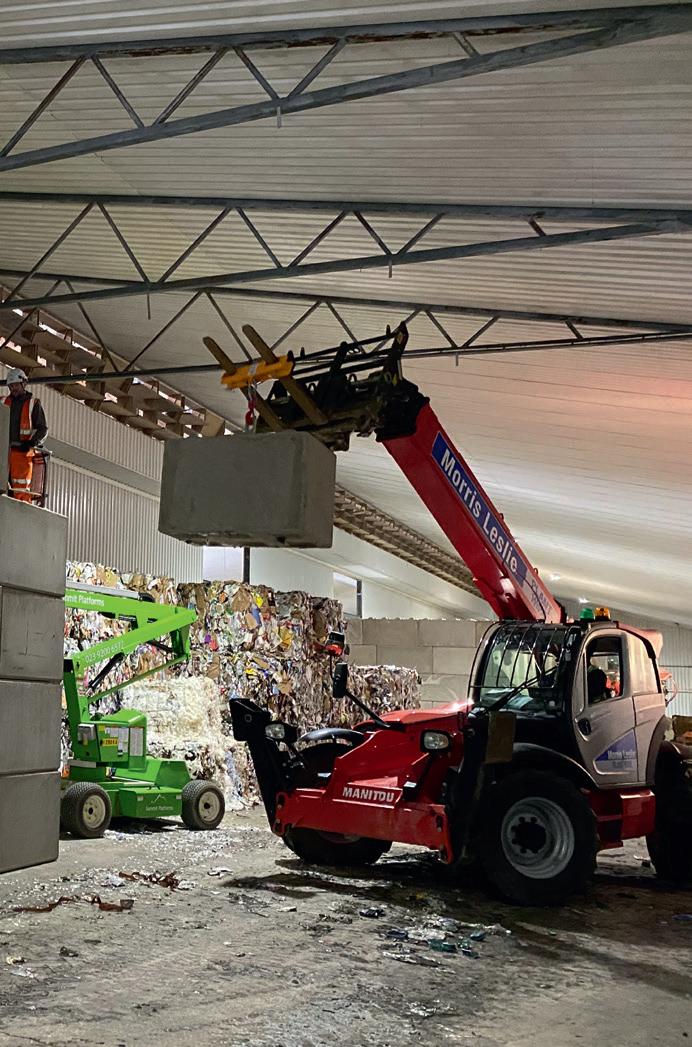
19 minute read
Business Profiles
Four-hour fire safety
Hampshire based recycling company Ecogen recently commissioned RSG Structures Ltd to construct six, four-metre-high firebreak walls within its King Worthy facilities
As part of its continual commitment to Health and Safety and the welfare of its employees, Ecogen installed new firebreak walls at its Kings Worthy operation. Totalling around 180 metres in length, the walls were to be installed within buildings and around existing equipment to give a four-hour fire protection rating for the facility.
RSG Director Gareth Neale takes up the story: ‘We were approached by Ecogen to provide options for their new internal fire walls and these walls had to be four-hour fire rated, fast build, dry jointed and selfsupporting. Of the many systems we use for firewall only the Legato system would meet all of these requirements and so designs were drawn up to fit within the existing buildings.
‘Space was tight but by using a variety of different sizes of block available we could make the walls fit snugly into position. Our next challenge was the amount of traffic movements Ecogen already have on their site. Installing during the normal working week would prove almost impossible logistically, as we needed to bring another 25 lorries onto an already busy site. Will and his team were fantastic to work with, as they arranged to shut the site down for a day so we could have unrestricted access from late Thursday until Saturday afternoon.’
Working closely with Elite and their transport partners, the load sequence was carefully orchestrated and executed to perfection with the first loads rolling in late Thursday, all blocks were on site by close of play Friday and all the blocks were installed by Saturday afternoon.
Gareth continued: ‘That’s over 750 tonnes of concrete with a four-hour fire rating supplied and installed in under 48 hours with no other support required. There isn’t another system of construction out there that would have been able to achieve this and highlights what can be achieved with a great product, great client, and a great team.’
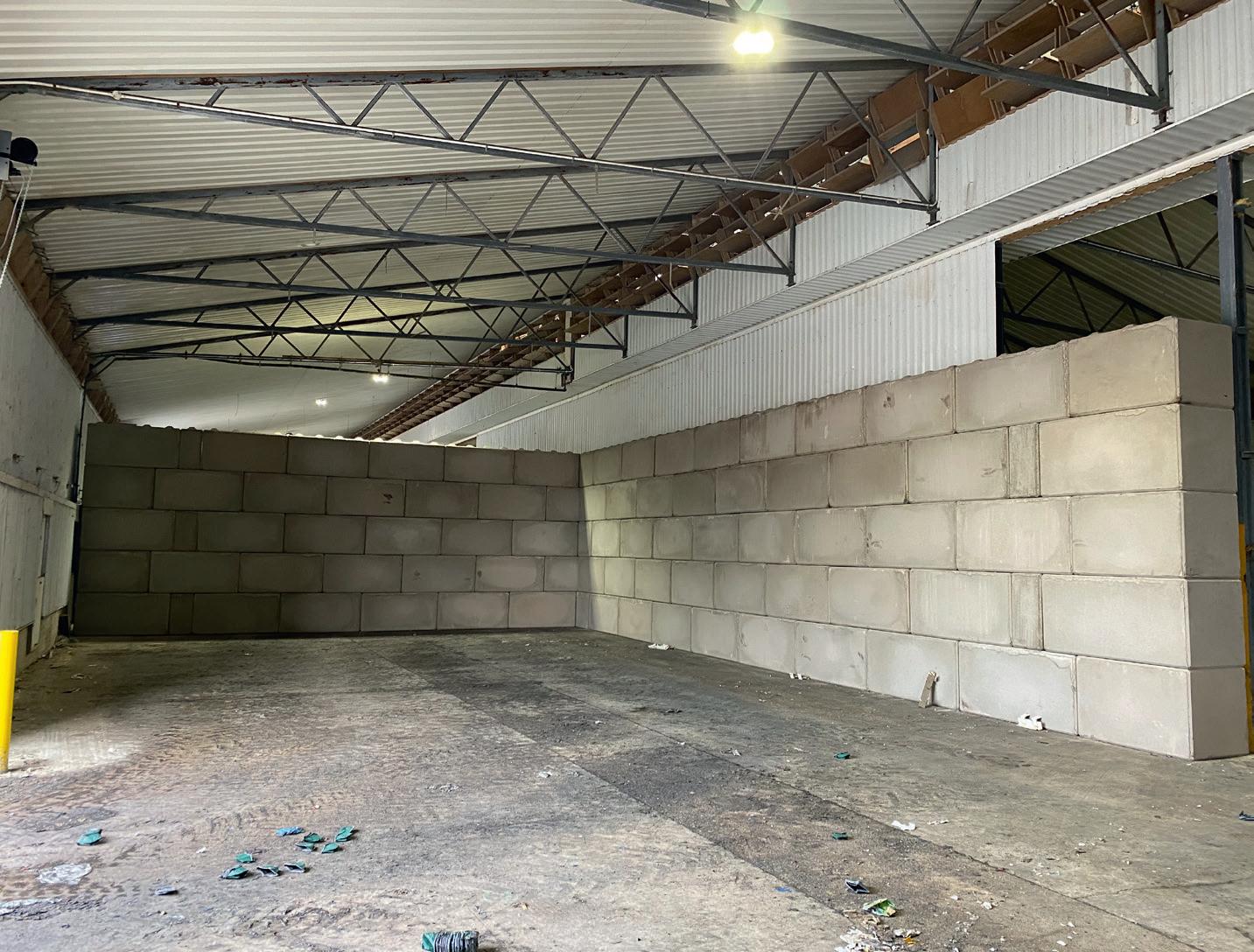
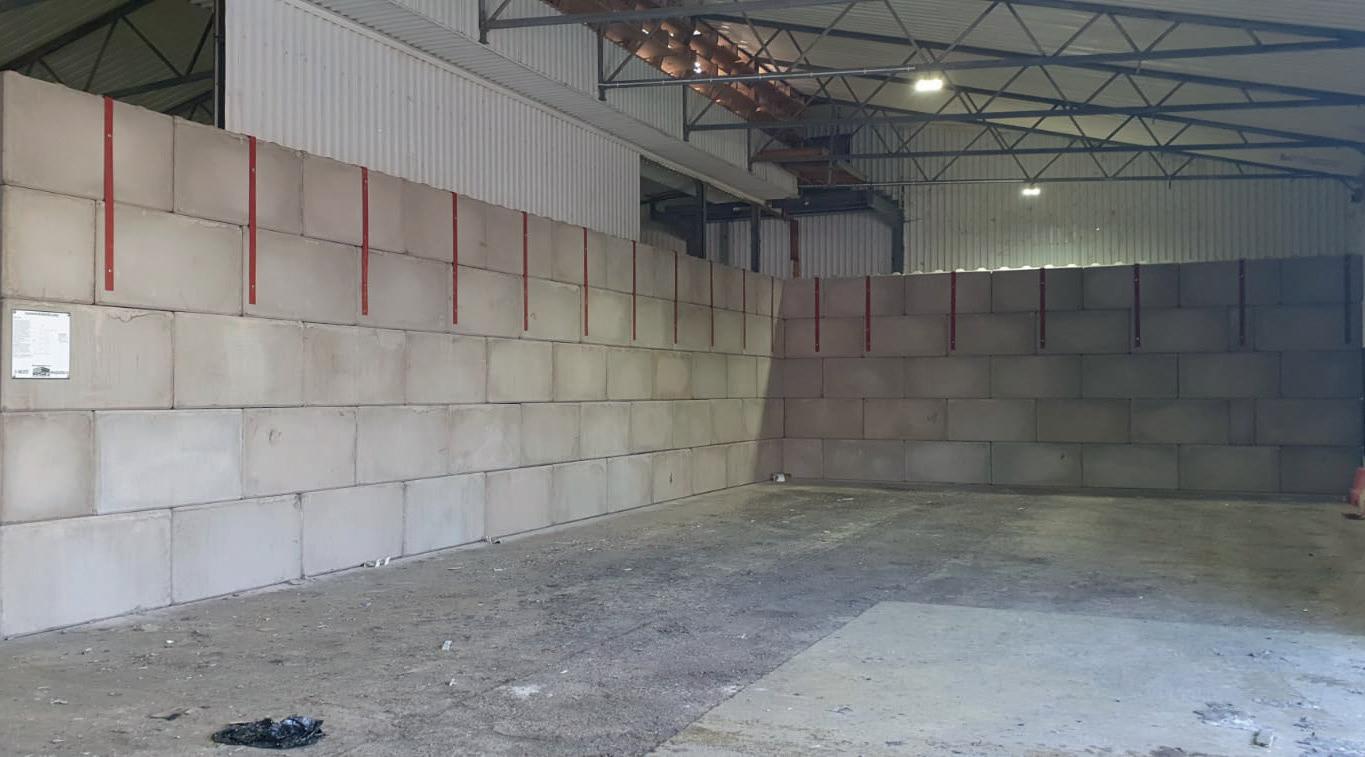
Tel: 01952 588885 / 08452 997597 Email: sales@eliteprecast.co.uk / gneale@rsgstructures.co.uk Visit: www.eliteprecast.co.uk













A watershed moment for waterproof safety boots
Buckbootz always knew that BBZ6000 would be a hard act to follow, but also that continually researching and developing new ideas could produce an even better product
One with immense visual impact and bristling with innovation. Shocked at the worker stats released from the Health & Safety Executive regarding serious incidents from poor visibility and moving machinery, the team at Buckbootz set out on a mission. This led to the safety footwear development that incorporated not only safety high visibility features but 360-degree safety reflective. The neoprene can also be rolled down the leg exposing high visibility lining providing even more added value safety.
As the Health & Safety Executive often points out, poor fitting safety boots often lead to ankle trips and sprains. To raise the bar further, BBZ8000 provides a first in certified ankle protection with added support cushioning around the ankle and Achilles area. Unlike many moulded polyurethane safety boots, BBZ8000 fits like a glove and not like a tube!
For the modern-day worker, lighter weight is a must and BBZ8000 brings this as part of the specification with superior lighter weight safety components in a metal free spec. The spec includes a special Nail Stop anti penetration midsole, a feature which is often ignored by many prominent safety footwear brands.
The outsole is rubber providing maximum durability, abrasion and slip resistance. With many footwear styles cutting corners with polyurethane outsoles, we continue to champion rubber. Afterall if rubber is good enough for tyres it is good enough for safety boots!
Comfort is not ignored with a cushion support insole and slip in anti-abrasion heel piece which helps to prevent break-up of the lining. The boots are Cold and Heat Insulated allowing the boots to be worn all year round. Finally, for workers who wear their boots all day, the antistatic function cuts across build-up of electric static.
Safety Specification and other details: • UKCA Certified: S5 HRO CI HI AN SRC. • Available in three colour options – black with hi-vis orange, black with hi-vis yellow and blue with hi-vis orange. • Designed and developed by Buckbootz.
Registered design certified. • Waterproof. • Non marking outsole. • Available in sizes UK 3 to UK 13.

Contact Buckbootz for further information via the contact information below.
Tel: 01382 828200 Email: info@buckbootz.com Visit: www.buckbootz.com
A WATERSHED MOMENT FOR WATERPROOF SAFETY BOOTS
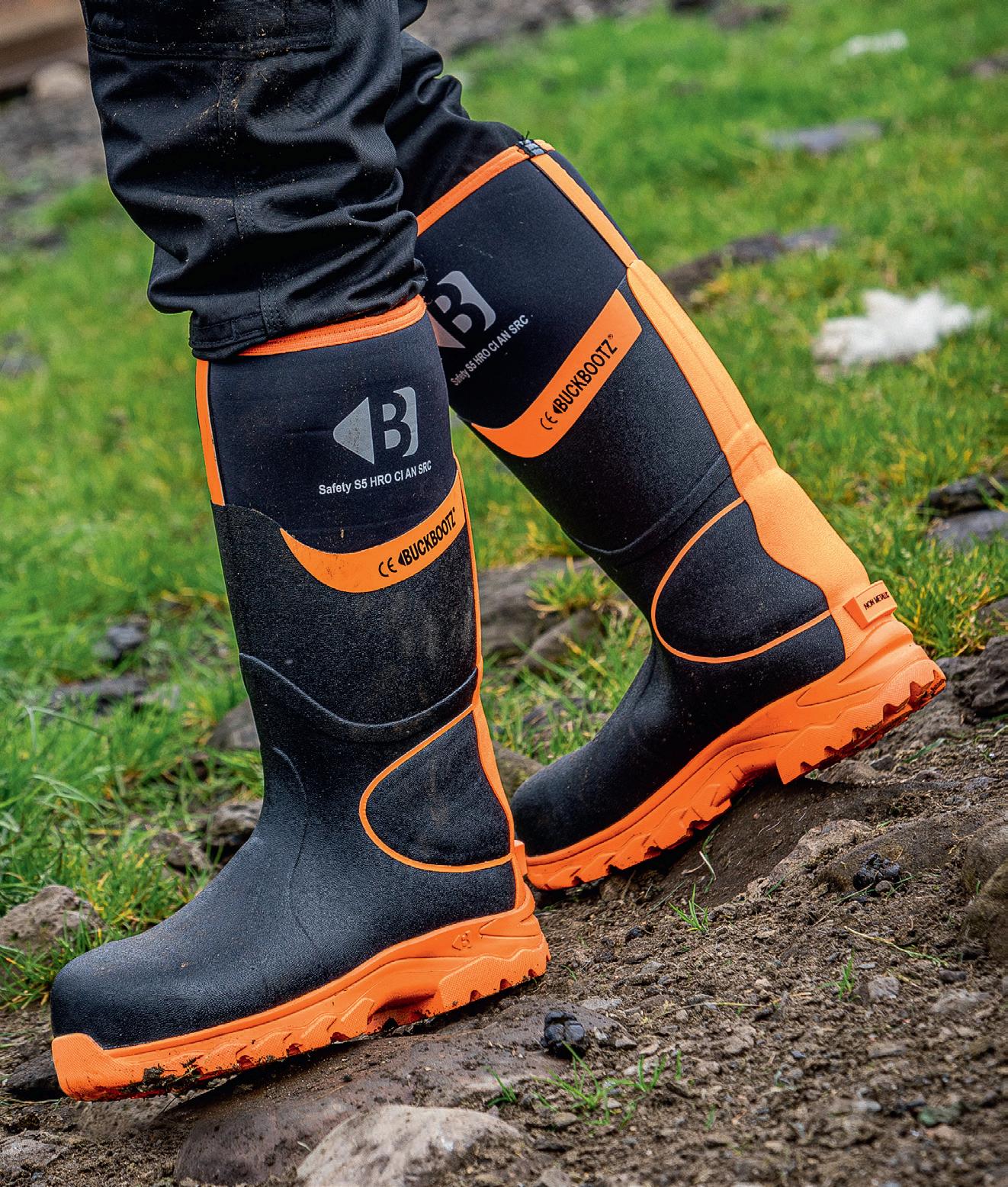
The benefits of galvanizing
Steel is a vital raw material used extensively across the rail sector. It’s strong, durable, and weldable – which is why it’s frequently adopted for large-scale infrastructure right the way through to smaller-scale elements including safety fencing, signage, and access equipment
However, like most metals, steel is vulnerable to corrosion when exposed to the atmosphere. And, with rail networks and supporting apparatus often exposed to harsh environments such as salty coastal areas or damp tunnels, the need for operators to ensure the protection of their highly valuable assets is a growing concern.
As a result, a process which is becoming much more widespread right across the sector is the use of galvanizing. So, what exactly is galvanizing, what’s the technology behind it, and which major rail projects is the process being used on?
What is galvanizing? Hot dip galvanizing is a process developed to prevent steel from corroding and involves the coating of steel with a layer of zinc by immersing the metal in a bath of molten zinc at a temperature of around 450°C. During the process, a metallurgical bonded coating is formed which protects the steel from rust and corrosion.
How does it work? Before the process can take place, the steel goes through a thorough chemical clean to remove all rust, oil and mill scale from the surface. When the cleaning process has been completed and the cleaning solution has been rinsed off, the coating process can begin. The steel is then fluxed and dipped into a bath of molten zinc that has been heated to around 450°C (860°F). The galvanized steel is then removed from the bath and left to cool.
Long life Galvanizing produces an easy to clean surface which can give a maintenance-free life of over 70 years. Whole life costs are reduced because there is no need for the expense, downtime and inconvenience of repeated and regular maintenance intervals, which makes galvanizing the most versatile and economic way of providing protection for long periods.
Reliable The process is relatively simple, straightforward and closely controlled. The thicknesses (weights) of the coatings formed are regular, predictable and simply specified. Hot dip galvanizing is one of the few coatings which is completely defined by a British Standard (BS EN ISO 1461).
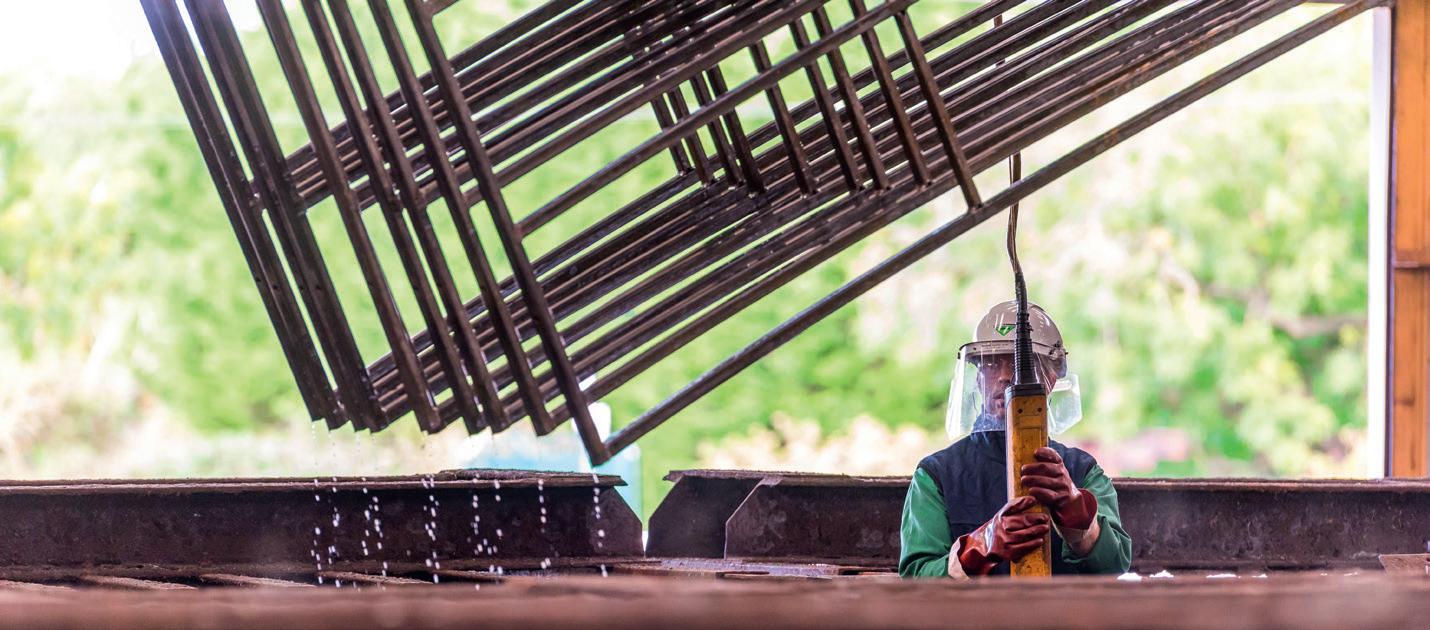

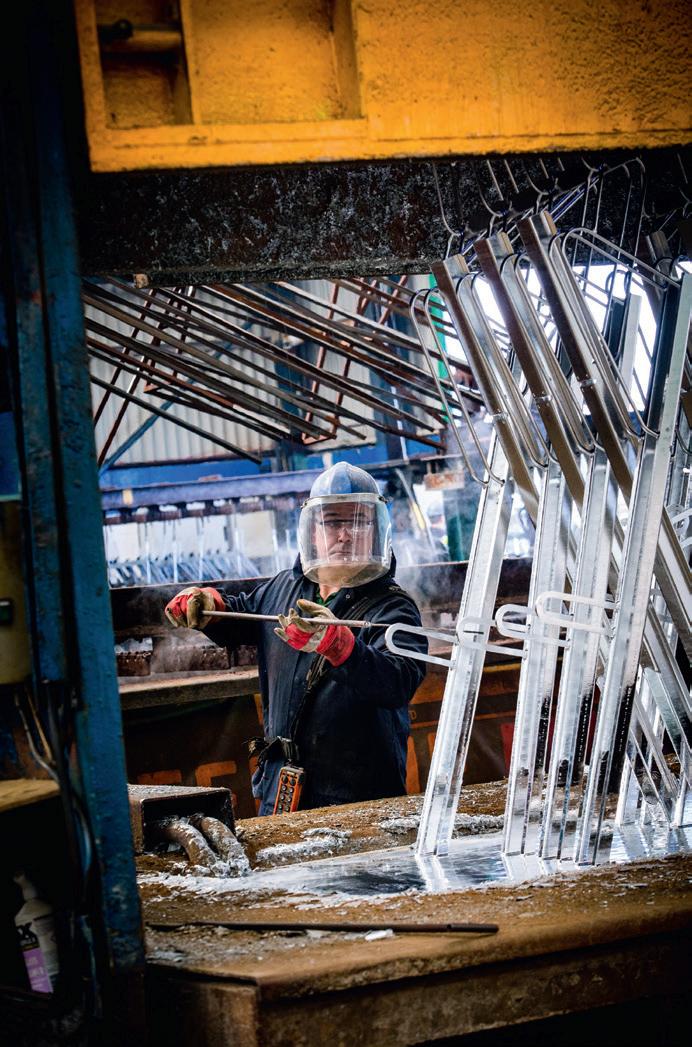
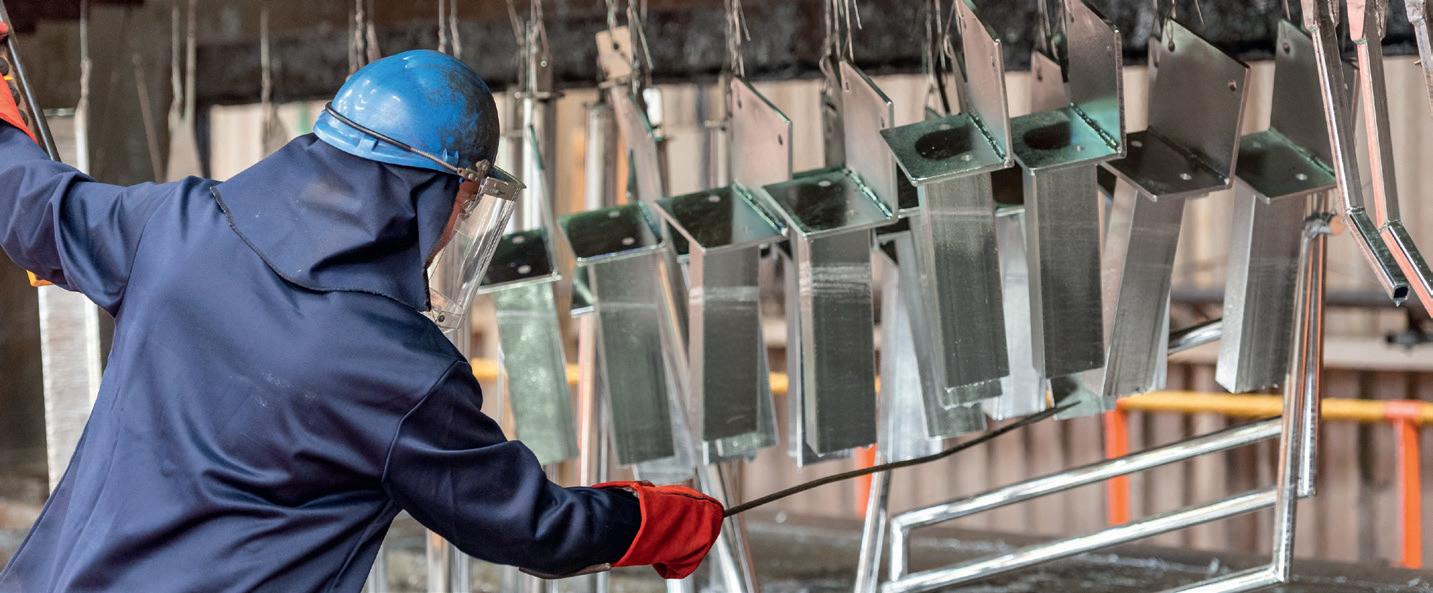
Tough Galvanizing is unique. The hot dip process produces a coating which is bonded metallurgically to the steel, which results in far greater resistance to mechanical damage during handling, storage, transport, and construction than any other finishing process.
Three-way protection Galvanized coatings protect steel in three ways: • The coating weathers at a very slow rate giving a long and predictable life. • The coating corrodes preferentially to provide cathodic (sacrificial) protection to any small areas of steel exposed through drilling, cutting or accidental damage; scratches are sealed by weathering products from the zinc. • If the damaged area is larger, the sacrificial protection prevents the sideways creep of rust which can undermine paint coatings.
Complete Because the process works by dipping steel in molten zinc, every part of the steel’s surface is coated – inside, outside, awkward corners, and narrow gaps – which would be impossible to protect in any other way.
Sustainable Not only does galvanizing lengthen the lifespan of steel by protecting it against rust and corrosion for many decades, but it’s extremely energy-efficient throughout its production and whole lifecycle. The process uses resources considerately to ensure a relatively low environmental burden, and galvanized steel can easily be recycled with steel scrap or re-galvanized, removed, and reused elsewhere.
Proud to be the UK’s largest hot-dip galvanizing organisation, Wedge Group Galvanizing Ltd has a national network of 14 sites strategically located across the country. Privately owned and with a history dating back over 150 years, the company has built an enviable reputation for providing a leading galvanizing service and is the partner of choice for many large contractors and specifiers across the rail sector.
The organisation is also proud to be an approved audited supplier for the Railway Industry Supplier Qualification Scheme (RISQS), ensuring that any rail company it works with can be assured of high-quality galvanizing backed by excellent customer service. Every one of its plants operates a Class 1 Galvanizing bath which has agreed compositional limits and records of assessment retained for ten years, as well as over 75 qualified personnel who are certified to the GA/BCSA Post-Galvanizing Inspectors Course.
The company has partnered with civil engineering company Lundy Projects for more than a decade – playing a key role in Network Rail initiatives including the modernisation of the Great Western Mainline.
It worked on the £25 million project to transform Edinburgh’s Haymarket Station into a major transport link, with over 200 tonnes of steel galvanized for the production of canopies installed above the station’s newly extended platforms. The C503 Crossrail Contract refurbishment works at Liverpool Street Station also saw over 100 tonnes of steel protected long term with hot dip galvanizing.
Other projects the Wedge Group has been involved in include the galvanizing of steelwork used to construct a multimillion-pound development on the Midland Metro line between Wolverhampton and Birmingham, and the refurbishment of the iconic Hull and Barnsley railway bridge which saw the team galvanize over 25 tonnes of structural steel in order to strengthen the bridge and ensure the track remained operational for its capacity. They have also worked on the grade II Listed Silver Jubilee Bridge, one of the world’s longest steel arched bridges which runs over the River Mersey, connecting Runcorn to Widnes and which sees more than 80,000 motorists a day pass over it.
This diverse range of projects demonstrates the ever-growing popularity of galvanizing as a protective coating across the rail industry, and also highlights the qualities of the process – including its flexibility, strength, and long-life - in addition to its inherent sustainable benefits.
Wedge Group Galvanizing Ltd is the largest hot-dip galvanizing organisation in the UK with a history dating back over 150 years. With 14 plants strategically placed across the country, the firm offers a truly national galvanizing service. For further information get in touch with Wedge Group Galvanizing via the contact information below.


Tel: 01902 601944 Email: info@wggltd.co.uk Visit: www.wedge-galv.co.uk



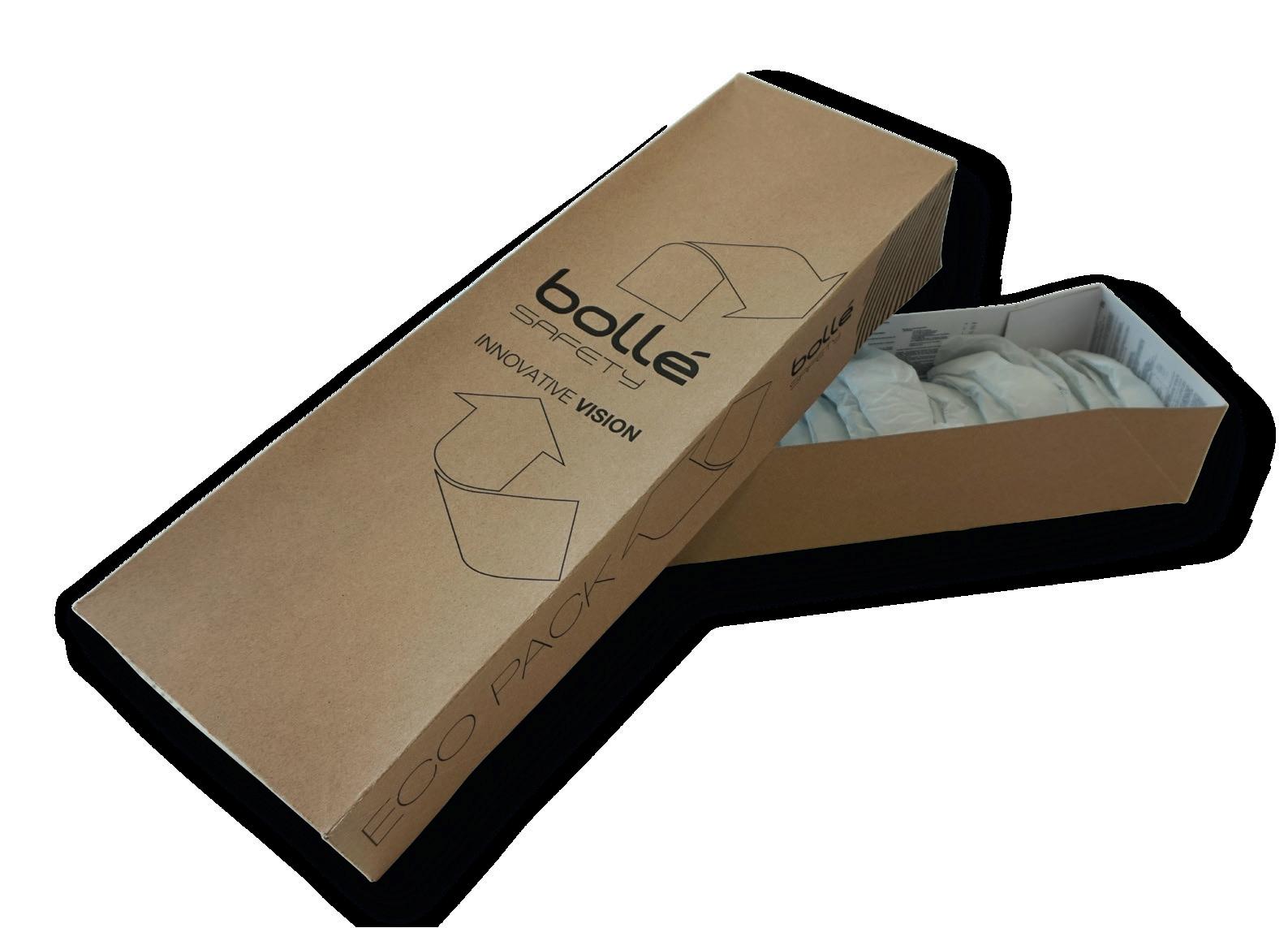
Going green
Sustainability has never been more necessary than today. As a society, we see the impact that humanity has on the earth and it is time for action. We all have a role to play in protecting the planet
Bollé Safety’s innovation has therefore been focusing on offering products that improves wearers experience while ensuring it stays aware of the need to respect nature, every step of the way. This is the reason why Bollé Safety decided, as a company to introduce the Go Green Plan, a sign of its commitment to become more conscious.
Conscious of the environment, by optimizing product design to reduce the amount of raw material required during production, but also by developing new packaging without any type of plastic. Bollé Safety is proud to provide, in conjunction with their key distributors and suppliers, a one hundred per cent recyclable packaging solution made from recycled cardboard and silk paper. Bollé Safety has also taken the decision to print its user instructions directly on outer packaging with waterbased ink which reduces packaging weight. This ultimately impacts the company’s carbon footprint during transportation, as well as the amount of waste generated by its packaging.
Bollé Safety is constantly working on bringing new products to market that use more sustainable production technologies or raw materials such as recycled nylon. Selling millions of units annually, the company believes in its duty to make a difference, for you and for the future. This approach drove Bollé Safety to launch more sustainable products, both in non-corrective and prescription safety eyewear. With Solis Go Green, the first sustainable safety eyewear, certified EN166 and with nylon one hundred per cent made of recycled fishing net, Bollé Safety wishes to set a new way to think of safety eyewear, greener and always as protective.
Within the prescription offer, Bollé Safety recently launched Klassee, a bio-based frame made of castor oil, that is set to become one of the key products in the line, following the reviews from the first customers.
Following developments of both the products and their packaging, Bollé Safety naturally improved the engineering of its accessories as well. As Covid increased the demand for anti-fog and lens cleaning solutions, Bollé Safety’s first project has been to improve the sustainability of its B-Clean range. After analyzing multiple available options, the team managed to implement new water-based solutions, that reduced the overall use of chemicals without impacting the efficiency of the cleaning solutions.
Conscious of the trust that customers place in Bollé Safety. Safety is no small word, and the company will always do its best to provide comfortable eyewear that gives users the utmost protection and visibility. Bollé Safety believes trust is required in its line of work. For users to have peace of mind, they must indeed trust their equipment to be both comfortable in all situations and protective when it counts the most and they must also trust in Bollé Safety to develop products and services of the utmost quality, for them and the rest of the stakeholders. Whenever possible, Bollé Safety uses the latest technologies available to build its molds to reduce both energy consumption and the waste created during the injection process.
We all have a role to play in protecting the planet, whether it is by reducing the number of printed documents, by using energyefficient production methods, by using ecofriendly packaging and more. Some actions may require more time to finalize and some may have less impact on the environment than we would like them to, but in the end, it is by being more conscious at every level of our society that we will reach long term sustainability. It is just the beginning.
Tel: 02083914700 Email: sales@bolle-safety.co.uk Visit: www.bolle-safety.com
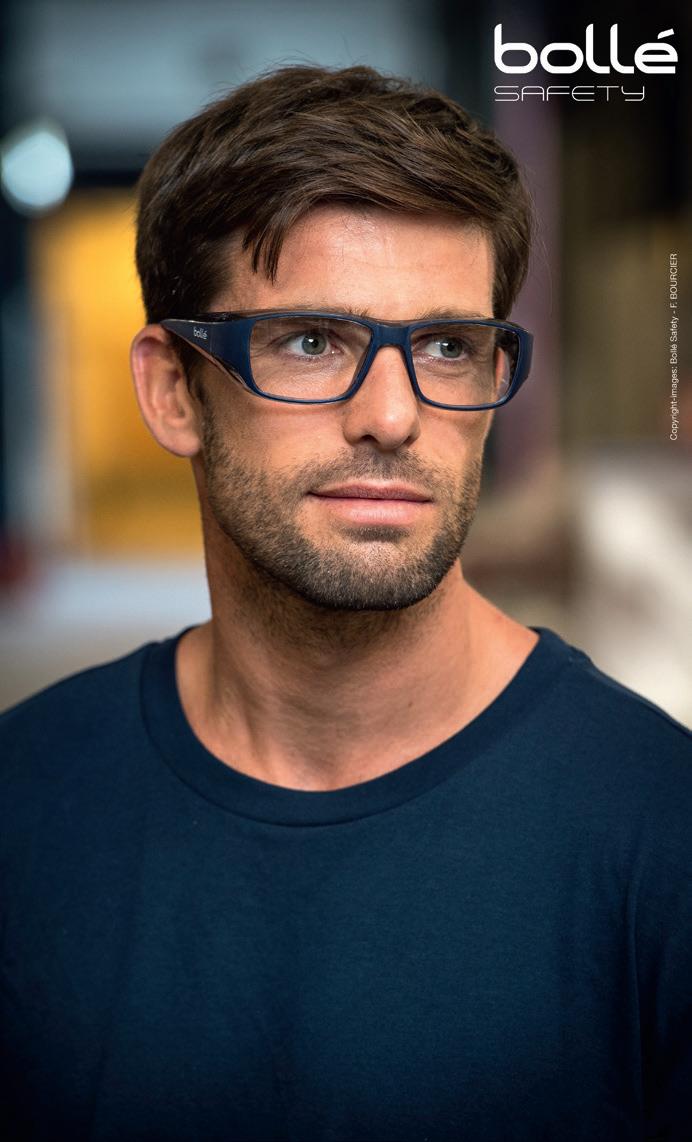
Bernhard Erdl CEO, Owner, Chief Developer at PULS GmbH explains how the heart of the system continues to evolve
The power supply is the heart of any system. This is a role it has held for decades now, working tirelessly away in the background from inside the cabinet. Recent years, however, have seen the power supply increasingly distance itself from this modest role.
The variety of applications – not to mention the requirements that go with them – are driving this evolution. This implies that, in addition to the essential function of a power converter, there is a growing demand for complete power supply system’s featuring integrated communication, redundancy, and protection functions. And then, of course, there is decentralisation, which also has a crucial role to play with regard to power supply and current distribution.
If we want to be able to meet this demand with standard products, a flexible product platform is needed to form the basis for implementing the various solutions. This platform also has to offer the fundamental qualities of a power supply, which include outstanding efficiency, a compact design, exceptional reliability, and a long service life.
It is with all of this in mind that PULS have gone back to the drawing board to develop a new genre of decentralised power supply system, FIEPOS – our decentralised power supply system. The efficient 300W and 500W power supplies are accommodated within a very compact housing unit that offers a high level of IP protection (IP54–IP67). These are available in various versions ex stock – including current-limited outputs for selective current distribution, a variety of different plug connectors, IO-Link as a communication interface, and efficient decoupling MOSFETs for developing redundant systems.
The PULS FIEPOS opens up whole new worlds of possibilities for system developers and integrators when it comes to modern system planning. So no matter whether you are looking for a centralised or decentralised solution, PULS is set to ensure that the power supply remains the reliable heart of your system for the foreseeable future.
Decentralised, cabinet-free power supplies for smart manufacturing The demand for flexible modular systems is transforming the world of manufacturing engineering as we know it, and the decentralisation of system components is shaping up to be a major development in this regard. Decentralisation can speed up the system planning process, simplify maintenance tasks, and facilitate straightforward system expansion. More and more system components are being relocated directly into the field now and are required to be provided with a degree of environmental protection from IP54 to IP67. As a result, central cabinets can be made smaller than ever or else dispensed with entirely.
So, what exactly is going on with the power supply in decentralised systems and machine engineering? The products currently available on the market basically follow three different strategies:
1.No decentralisation of the power supply – the power supply is not included in the decentralisation process and remains in the central cabinets. In order to supply


power to the remote peripheral devices in the field, long cable harnesses have to be installed using costly large cross-section wire to minimise losses and the system power supply has to be oversized to compensate for the loss of performance caused by the long cables.
2.Power supply in a decentralised on-site cabinet – the power supply, together with other standard components such as electronic fuses or switches, is taken out of the central cabinet and placed directly onto the machine in smaller, decentralised IP67 cabinets. System builders often handle the planning and assembly of these cabinets themselves. 3.Customer-specific solution – a customer-specific, decentralised solution is developed especially for the power supply. The size and mechanics are also specifically tailored to the individual system along with the electrical specifications.
Benefits of a decentralised power supply Many systems integrators have already taken action after recognising the benefits of a decentralised power supply: it starts with the system planning process, which offers greater freedom. There are many applications, such as conveyor belts or production lines that can be supplied with energy much more efficiently and flexibly on a decentralised basis.
The power supply no longer has to be oversized, and the individual system parts can be put together on a modular basis, allowing them to be extended, maintained, and converted more quickly and effectively than ever. By making the cabinets smaller, or even doing away with them entirely, the newly gained space can also be used to expand added-value system components. The power cable lengths and cross-sections can be reduced, which in turn saves on the costs of copper. remain high using currently available solutions. Even straightforward, decentralised on-site cabinets, for example, often comprise more than ten components. All of these must be purchased, stored, and ultimately combined into a system by a technician. As for developing customer-specific solutions, this is even more time consuming, expensive, and only worthwhile in larger volumes. Until now, there has not been a decentralised standard power supply that is available to order ex stock, is easy to install, and flexible enough to offer a viable alternative in all three of the above scenarios.

Straight from the cabinet to the field Relocating the power supply from the control cabinet directly into the field provides an all-in-one power supply system for decentralised systems engineering. It is then possible to use shorter cables and smaller cable cross-sections. This not only saves on the costs of copper, but also on the installation work for the cabling. Local onboard set up and diagnostics makes system commissioning, troubleshooting and maintenance simpler.
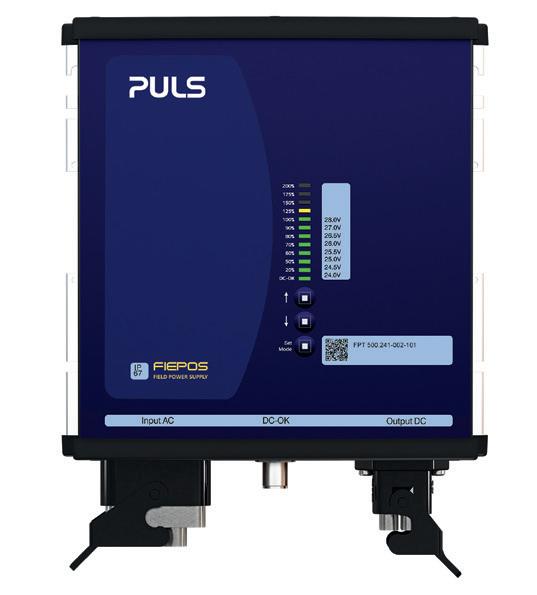
PULS Cabinet-free power supply system as a solution PULS are closing this gap in the decentralisation market with the development of their FIEPOS power supply product family. This opens up new worlds of possibilities for systems designers by providing cabinet-free planning of their systems and machines. The FIEPOS range is based on 1-phase and 3-phase IP54–IP67 power supplies with 300 W or 500 W output power. It also features an IOLink or output OK signal as a communication interface. The various versions are based on this platform with numerous connector configurations as well as optional safety and redundancy functions. PULS classifies the devices into the two FIEPOS product series of Basic and eFused. The devices in the Basic series have a single output, for which the various plug connectors such as M12-L/-T/-A, 7/8”, or the HAN-Q series are available. In addition, the Basic version is also available with an integrated decoupling MOSFET on the output side and a soft output regulation characteristic. These two functions make the devices particularly useful for assembling reliable redundant systems outside of the cabinet and help to increase performance by establishing parallel connections.
The FIEPOS eFused series comes complete with up to four internally protected outputs. Thanks to the built-in current limit, these devices can easily be used for selective current distribution and protection. The outputs are configured and monitored via IO-Link or via the practical human-machine interface located directly on the front panel of the device.
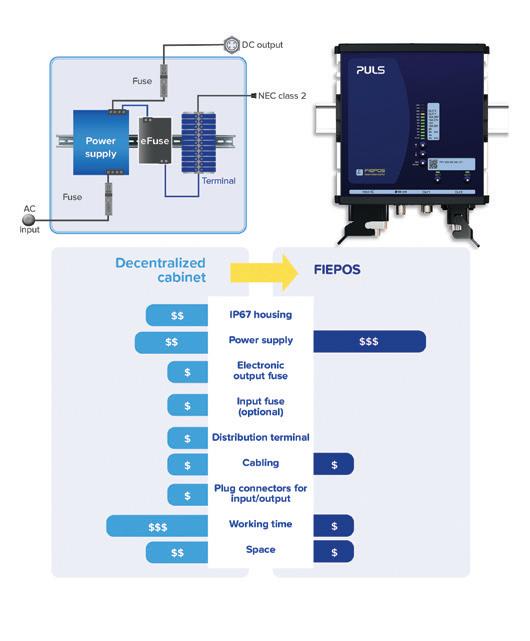
Tel: +44 1525 841001 Fax: +44 1525 841291 Email: sales@puls.co.uk Visit: www.pulspower.com










